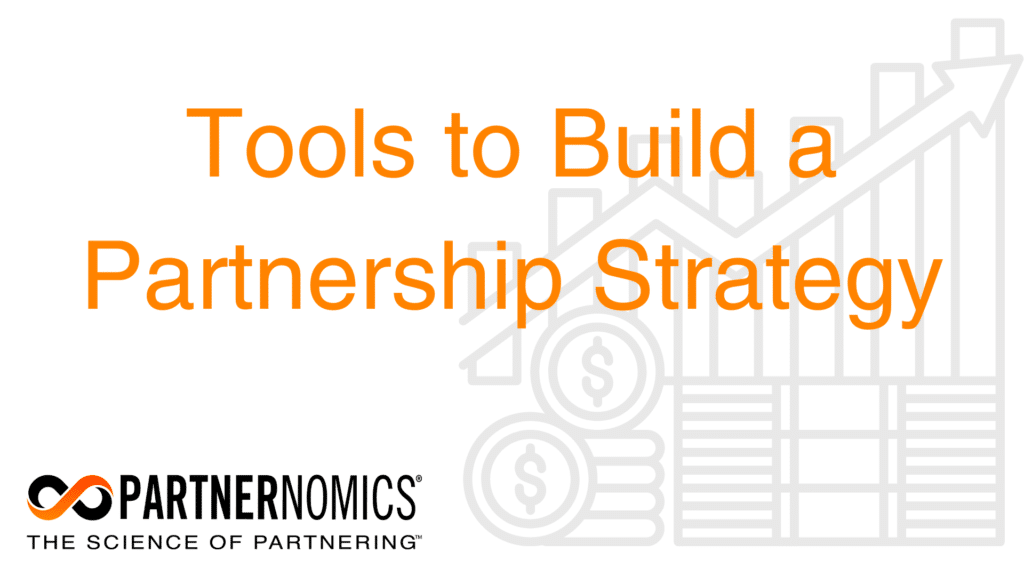“Failing to plan is planning to fail.” ~Benjamin Franklin
The first and arguably more critical step in building a world-class partnering program is developing a clear and focused strategy. In its most basic form, a partnering strategy identifies your company’s and your partnering programs’, who, what, where, when, why, & how.
Partnership strategies are created at multiple levels. First, at the organizational level, the partnership plan connects the corporate strategy to the roles and responsibilities of the partnering function. Second, partnering plans are made at the functional programmatic level to identify the strategic outcomes desired for each partnership program, such as referral, VAR, and marketplaces. Third, partnering plans are created for individual partnerships that warrant this level of collaboration.
Organizational Level – Partnership Strategy
All organizations must spend the necessary time to get crystal clear as to what they want to achieve from their partnering programs. Step #1 in partnering success always starts with achieving executive clarity and executive support, so PARTNERNOMICS® starts here too!
There are three general avenues to achieve organizational growth, they are: 1) Organic – build it; 2) Acquisition – buy it; and 3) Partner – collaborate for it. Most organizations leverage a combination of organic and partnering.
Ensure that your C-suite, Board of Directors, and other senior leaders develop (or approve) a reasonably detailed Organizational Partnering Plan (OPP) that addresses your organization’s purpose for investing in a partnering function. Over the years our clients said this single tool, the OPP, was the most critical ingredient of success as it forced conversations that otherwise would not have happened. When done correctly the OPP delivers the clarity, focus, and alignment that all organizations need to accelerate execution.
Your OPP will become your company’s overarching recipe and definition for the success of your partnership program. This powerful tool has 12 components and its length will vary based on the number of programs and solutions that your organization has or intends to deploy.
The 12 components of the OPP are:
1. Executive Summary
2. The Problem Being Addressed
3. Purpose of Creating a Partnering Function
4. Approach
5. Strengths
6. Weaknesses
7. Opportunities
8. Threats
9. Assumptions
10. Risks
11. Requirements
12. Goals
If your company could use more clarity, focus, and alignment in operating its partnership program, invest the time to create an OPP. You will be surprised at how many important topics surface when creating an OPP with your leaders and the gains that will be realized from this tool.
Functional Level – Partnership Program Strategies
Top partnering professionals create individual Strategic Partnering Plans (SPP) for each of their partnering initiatives. An SPP links up to a partnering program identified in your company’s OPP.
For example, you should create an SPP for each partnering program type, such as affiliate, referral, and co-sell your company has or plans to launch.
To the extent you have segmentation within each partnering initiative, you should create a unique SPP to detail the nuances of that specific segmentation. For example, a company could have an SPP that is focused on Value-Added Resell (VAR) partners, within the healthcare vertical, for outpatient clinics, that specialize in orthopedic surgeries.
The more specific you make each SPP, the clearer your intentions will be communicated and the easier it will be to operationalize each unique partnering initiative.
Most organizations start by creating 5 to 10 unique SPPs that capture their most popular programs, then expand as their programs mature.
The 12 components of the Strategic Partnering Plan (SPP) are:
1 – Executive Summary
2 – Problem being addressed
3 – Purpose of this partnership initiative
4 – Approach
5 – Strengths
6 – Weaknesses
7 – Opportunities
8 – Threats
9 – Assumptions
10 – Risks
11 – Requirements
12 – Goals, your intended outcomes
Companies with mature partnering programs commonly develop SPPs through the lens of their functional line of business. For example, a marketing team, product team, customer success team, and channel management team each sees partnering initiatives through a unique lens, and therefore, unique criteria must be identified for each of the SPP components.
The size and complexity of your organization’s reporting structure will determine the best approach for creating SPPs. If your company is relatively small and well coordinated, you should consider addressing each of your organization’s line-of-business interests within a single SPP document.
To the contrary, if your organization is relatively large or not well coordinated, you should consider addressing each of your organization’s line-of-business interests using separate line-of-business SPPs, then aligning each plan to ensure a cohesive approach.
As previously stated, “Failing to plan is planning to fail.” Success in any partnering program starts by clearly defining what success is and what is needed to get there. The 12-component Strategic Partnering Plan is a powerful tool that brings clarity, focus, and alignment to each of your partnering initiatives and allows your team to accelerate its path to success.
If your company could use more clarity, focus, and alignment in partnership operations, invest the time to create an OPP and SPPs for your largest programs. You will be surprised at how many important topics surface when creating these plans with your leaders and the gains that will be realized from these tools.
If you would like to speak with one of our Certified PARTNERNOMICS® Orchestrators to show you how to get started, we are here to help, just request a free consultation.
Mark Brigman
CEO
PARTNERNOMICS®


